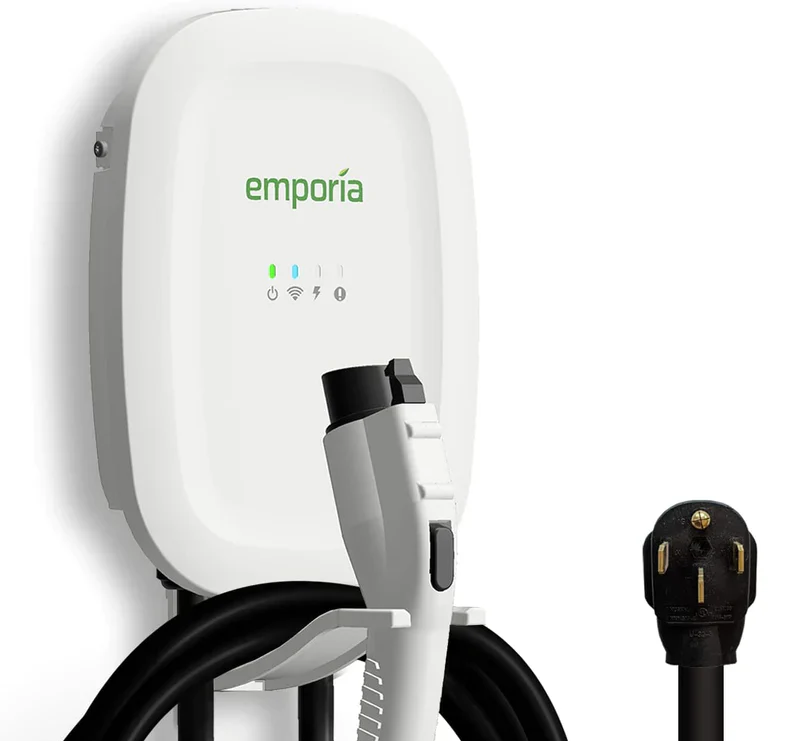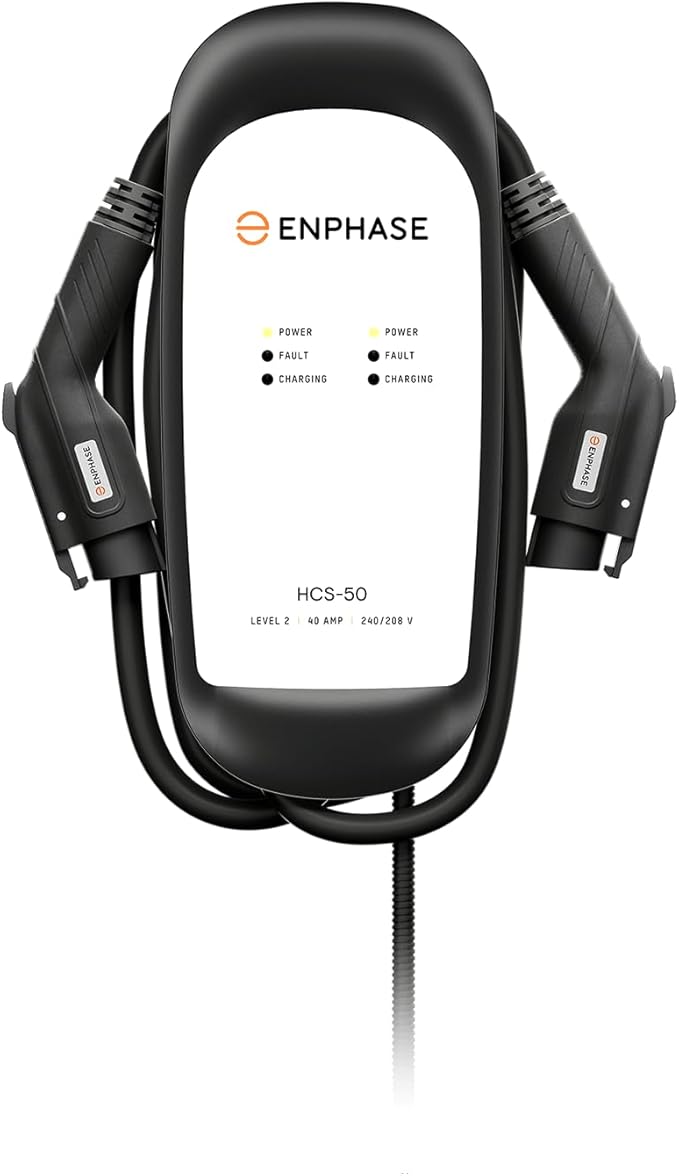As electric vehicle (EV) adoption accelerates, more families are going electric—not just with one car, but two or more. If your household has multiple EVs (or plans to), managing home charging without overloading your electrical system becomes a key priority. The good news? With the right equipment and a smart setup, charging multiple EVs at home can be seamless and cost-effective. Here's everything you need to know about dual EV charging—how it works, what challenges to expect, and how to future-proof your home.
Why Dual EV Charging at Home Can Be a Challenge
As more households embrace electric vehicles, the demand for at-home charging capacity has grown significantly. Most EV owners opt for Level 2 chargers, which provide much faster charging speeds than the standard Level 1 chargers that plug into a regular household outlet. Level 2 units require a 240-volt electrical connection and typically deliver 20 to 40 miles of range per hour of charging, making them ideal for daily use and overnight recharging.
However, this faster charging comes with a tradeoff—power demand. A single Level 2 charger usually draws between 30 and 50 amps, depending on the brand, model, and amperage setting. When two or more EVs need to be charged at the same time, the combined load can place significant strain on your home’s electrical infrastructure.
This is where many homeowners run into trouble. The typical residential electrical panel in the United States is rated at 100 to 200 amps total. If two chargers are operating at 40 amps each, that alone could consume up to 80 amps of capacity—not including other appliances such as HVAC systems, water heaters, electric stoves, and more. When the total electrical demand exceeds what the panel can safely supply, circuit breakers may trip, or worse, the system can overheat or degrade over time.
Older homes are especially vulnerable. Properties built before widespread EV adoption often lack the dedicated circuits, panel capacity, or wiring infrastructure needed to support high-load EV charging. In some cases, even newer homes may not be wired with EV-readiness in mind unless specified during construction.
This creates a common dilemma: how do you charge two electric vehicles at home without overloading your system, causing safety issues, or requiring an expensive electrical panel upgrade? The solution often involves a combination of smart load management, charger scheduling, and—when necessary—professional electrical modifications. Understanding these limitations is the first step to designing an efficient and safe multi-EV charging setup at home.
For more technical guidance on home EV charging safety and infrastructure requirements, consult the U.S. Department of Energy's residential EVSE installation guide.
How to Safely Charge Two or More EVs at Home
As more families adopt electric vehicles, managing multiple EVs on a single residential electrical system has become a growing concern. Fortunately, there are safe and effective ways to power multiple cars without overloading your panel or requiring a complete electrical overhaul. Here are three proven methods:
1. Stagger Charging with Scheduled Start Times
One of the most straightforward strategies is to schedule charging times so your EVs don’t draw power simultaneously. Most modern electric vehicles allow you to program a charging window using the onboard software. Similarly, many Level 2 chargers come with smart scheduling capabilities through their companion apps.
By setting one vehicle to charge during off-peak nighttime hours and the other in the early morning, you can significantly reduce the total load on your electrical panel. This method not only prevents overload but also helps you take advantage of lower utility rates, especially if your energy provider uses time-of-use (TOU) pricing.
Chargers like the Emporia Level 2 EV Charger (48 amps) offer detailed scheduling features via Wi-Fi-connected apps, allowing users to automate their charging routines and reduce energy costs.
Emporia 48 Amp Smart Charger
- Great price for a 48 amp charger.
- Excellent smart features.
- Highly durable and resistant to extreme weather conditions.
- Easy installation.
For more information on smart charging benefits, visit the U.S. Department of Energy’s EV charging guide.
2. Use Smart Chargers with Built-In Load Sharing
A more advanced option is to invest in smart Level 2 chargers that support load sharing. These devices communicate with each other or operate as dual-output systems, automatically distributing available power between two connected vehicles. This eliminates the need to manually stagger charging or worry about overloading your electrical panel.
The Enphase HCS-D50 Dual EV Charger (40 amps) is a top choice for multi-EV households. Designed with dual outputs in a single unit, it features automatic load balancing that intelligently splits the available amperage between two vehicles. This makes it easier to charge two EVs at once without additional wiring or complicated installation.
Enphase HCS-D50 Dual EV Charger (40 amps)
- Safety-Certified and All-Weather
- Charge 2 EVs on one circuit
- Designed for your make and model
- LED Lights
Smart load sharing ensures that your system remains within safe limits while maximizing charging efficiency.
3. Upgrade Your Electrical Panel (If Required)
In some cases, your home’s current electrical system may not be sufficient to handle multiple high-amp chargers—especially if your panel is rated at 100 amps or lower. If you're already maxing out capacity with other household appliances, adding even one Level 2 charger could strain your system.
Upgrading to a 200-amp service panel or installing a dedicated subpanel for EV charging can resolve these limitations and future-proof your home for additional electric vehicles or high-energy appliances.
Before making any upgrades, consult a licensed electrician to conduct a load calculation and determine your home’s true capacity. To calculate the cost of EV charger installation, use our EV charger installation cost calculator EV Charger Installation Cost Calculator.
An upgraded panel not only allows for safer, more reliable charging but also increases the long-term value of your property—especially as electric vehicles become more mainstream.
Features to Prioritize in a Multi-EV Charging Setup
When comparing Level 2 chargers, look for features designed to simplify multi-car management:
| Feature | Why It Matters |
|---|---|
| Wi-Fi or App Control | Enables scheduling, usage tracking, and remote monitoring |
| Adjustable Amp Settings | Allows you to dial back power if your panel is under strain |
| Load Sharing | Prevents overload by automatically distributing power |
| Weatherproof Design | Important for outdoor or garage installations |
| Scalable System | Lets you add a second charger later without starting from scratch |
Plan for the Future—Even If You Only Have One EV Now
While you may only own one electric vehicle today, it’s wise to think ahead. The electric vehicle market is growing rapidly, and trends suggest that multiple-EV households will soon become the norm.
According to the International Energy Agency (IEA), global EV sales are projected to continue their upward trajectory, with electric vehicles expected to make up more than 50% of new car sales in leading markets by 2035. That shift isn’t just happening abroad—U.S. adoption is also accelerating, thanks in part to new incentives, wider EV model availability, and expanding charging infrastructure.
Even if a second EV isn’t in your driveway today, there’s a strong chance it could be within a few years. That second vehicle could be a plug-in hybrid for commuting, an all-electric SUV for family trips, or an upgraded model with a larger battery and faster charging needs. Planning your home charging setup now can save you time, money, and hassle later.
Future-Proof with Dual-Charging Capability
Rather than retrofitting your system down the line, it’s more cost-effective to install a dual-capable charging system during your initial setup. A charger like the Enphase HCS-D50 Dual EV Charger (40 amps) is purpose-built for homes that either already have or are planning for two electric vehicles. With dual outputs, built-in load management, and weather-resistant design, the HCS-D50 offers a ready-made solution for two-car households.
By choosing a forward-thinking product now, you:
- Avoid the need for costly rewiring or a second installation later
- Eliminate the logistical headaches of swapping charging cables daily
- Enable simultaneous or load-balanced charging with minimal oversight
- Increase your home’s resale value and market appeal—especially as EVs become more common among buyers
Enphase HCS-D50 Dual EV Charger (40 amps)
- Safety-Certified and All-Weather
- Charge 2 EVs on one circuit
- Designed for your make and model
- LED Lights
According to a study by Realtor.com, homes equipped with EV charging infrastructure can command a premium on the market, especially in EV-friendly states like California, New York, and Washington.
In short, investing in the right charger today ensures you’re not just meeting your current needs—but preparing for what’s next.
Final Thoughts: Make Home Charging Work for Every EV in Your Garage
Managing multiple EV chargers at home isn’t as complicated as it sounds. Whether you rely on smart scheduling, load-sharing chargers, or upgrade your panel, the right setup can support your evolving EV lifestyle—without adding unnecessary stress.
Think ahead, choose a scalable solution, and turn your garage into a true EV-ready hub.
Want to learn more about installing Level 2 chargers or upgrading your panel? Start with the U.S. Department of Energy's Alternative Fuels Data Center to explore tools, incentives, and planning guides tailored to EV owners.


